BC Children’s Hospital researchers are using a familiar ingredient in a novel way: fighting pediatric cancer.
Researcher James Lim, an associate professor in the University of British Columbia’s department of pediatrics, along with his PhD student Tariq Bhat, are using fertilized chicken eggs to keep tiny biopsied samples of cancerous tissues from children’s tumours alive in a lab.
Then the idea is to test different ways to eradicate the cancer before recommending the best treatment to a child’s clinical care team — but right now the research is also just proving that the egg can keep the “micro tumour” alive, Lim said.
Pediatric cancer is considered a rare disease and generally responds well to conventional treatment like chemotherapy, Lim said.
The province’s pediatric cancer cases are all treated at BC Children’s Hospital, which sees around 130 to 150 diagnoses per year. Between 50 and 80 per cent of cases will be leukemia, Lim said, where children have an 85 to 90 per cent survival rate with conventional therapy. Pediatric brain tumours have a 70 per cent cure rate with conventional therapy.
Precision medicine steps in when the first several rounds of conventional therapy fail. It’s a process of identifying and selecting drugs based on how they will attack the things that enable or drive each patient’s cancer.
Lim said B.C. is “not very far out” from the goal of being able to provide precision medicine to every kid for whom conventional therapy fails in B.C., which he estimates would be around 10 kids per year.
“We’re not there yet but it’s very achievable,” he said.
The only way you can know exactly how a person’s tumour will respond to treatment, with all their unique genomics and other traits, is to test directly on the living tumour, Lim said.
This is no easy task.
First, a patient’s cancer or tissue will be biopsied and sent to a lab for genetic testing and molecular characterization, which will tell researchers what drugs could be used to fight the cancer, Lim said.
Next, researchers will check if any of those drugs are approved for use on children. Many drugs target specific proteins in a cancer and therefore don’t have to be the big guns or even a cancer therapeutic, Lim said.
“One example is a common antibiotic,” he said. “They have a lot of activity against mammalian cells and there are lots of antibiotics that have been approved for kids.”
Certain stomach and heart medications can also be used to fight children’s tumours because of their molecular makeups.
But before a patient is recommended treatment, researchers want to test how the cancer will react to the drug.
This is where the egg comes in.
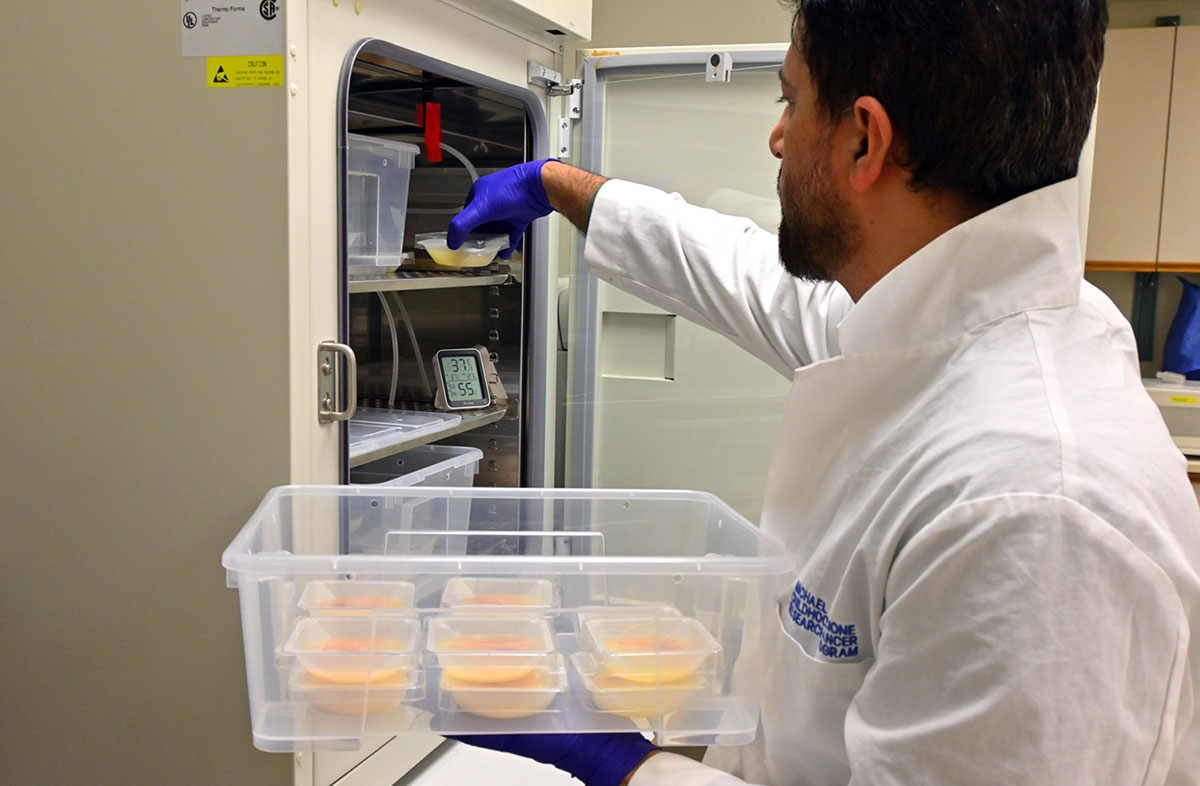
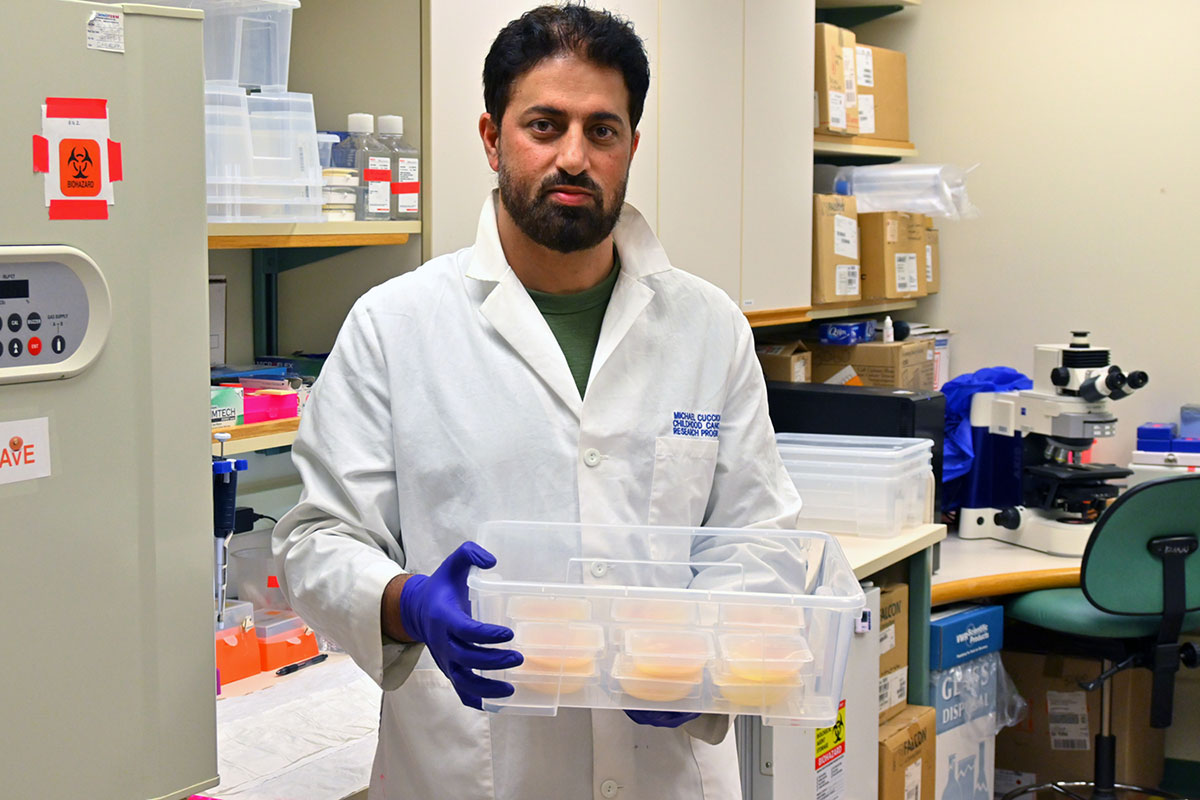
The highly vascularized tissue in the developing chicken embryo will “feed” a human tumour or cancerous tissue.
When you biopsy a kid’s tumour or take a tissue sample, you get a very, very small amount of actual material, usually no more than a millimetre or two cubed. “And a lot of that goes to the clinical pathology workshop, tissue staining and diagnosis,” Lim said.
This is because of the size of the patient — the most common pediatric brain tumours and leukemia happen between when a child is born and when they turn five, Lim said.
“The most common pediatric cancers happen in the youngest patients,” he said, and the tumours are therefore much smaller than, for example, a tumour present in adult breast cancer.
And so the researchers get a tiny sample to test the drugs on. “Half a lentil’s worth would be a lot of material for us,” Lim said.
To do their research, they give each egg a “sliver of a millimetre” of cancerous cells. Half a lentil’s worth of tumour would “easily” implant a dozen eggs with cancer, Lim said.
The process in the lab
Three dozen fertilized eggs are delivered to the lab once a week from a hatchery in Alberta. They rest for a day to settle any air bubbles they may have developed and then get cracked open and placed in a tray.
It took some time to figure out the best way to crack open the eggs, Bhat said.
“I thought the normal way you crack an egg, like in the kitchen when you’re making an omelette, that it would be the same thing. But it wasn’t. They’re so fragile when they’re fertilized, and when you incubate them they become the highest fragile things,” he said.
The eggs are delivered each Thursday, are put in an incubator Friday (this day is dubbed embryonic Day 1), are cracked open on Tuesday (embryonic Day 5) and are given cancer on Monday (embryonic Day 11, experimental Day 1).
There are three ways researchers are delivering the cancerous cells and then attacking the cancer, which could loosely resemble different ways a patient could be given treatment.
First there’s intravenously, where things are injected into a vein. This would be pretty similar between the animal model and a human patient, Lim said.
Next there’s topical, where Baht makes a small cut in the chicken embryo and places a tumour sample onto it. This is treated by dripping drugs onto the tumour and could loosely translate into a human medication applied through a cream or lotion, he said.
Finally there’s intra-amniotic, where the cancerous cells are injected into the amniotic space around the embryo, as is treatment. This one doesn’t really translate to humans but could, very loosely, represent taking oral medication, Lim said.
In an ideal scenario each egg can have several samples of cancer given to it, which lets researchers test different drugs and doses, Lim said. That’s not always possible because of the extremely small size of their sample.
A couple of days later the cancerous cells are checked to see how they responded to the drugs. If the researchers find a drug that works, they’ll recommend it to the patient’s clinical care team, who then decides where to go from there.
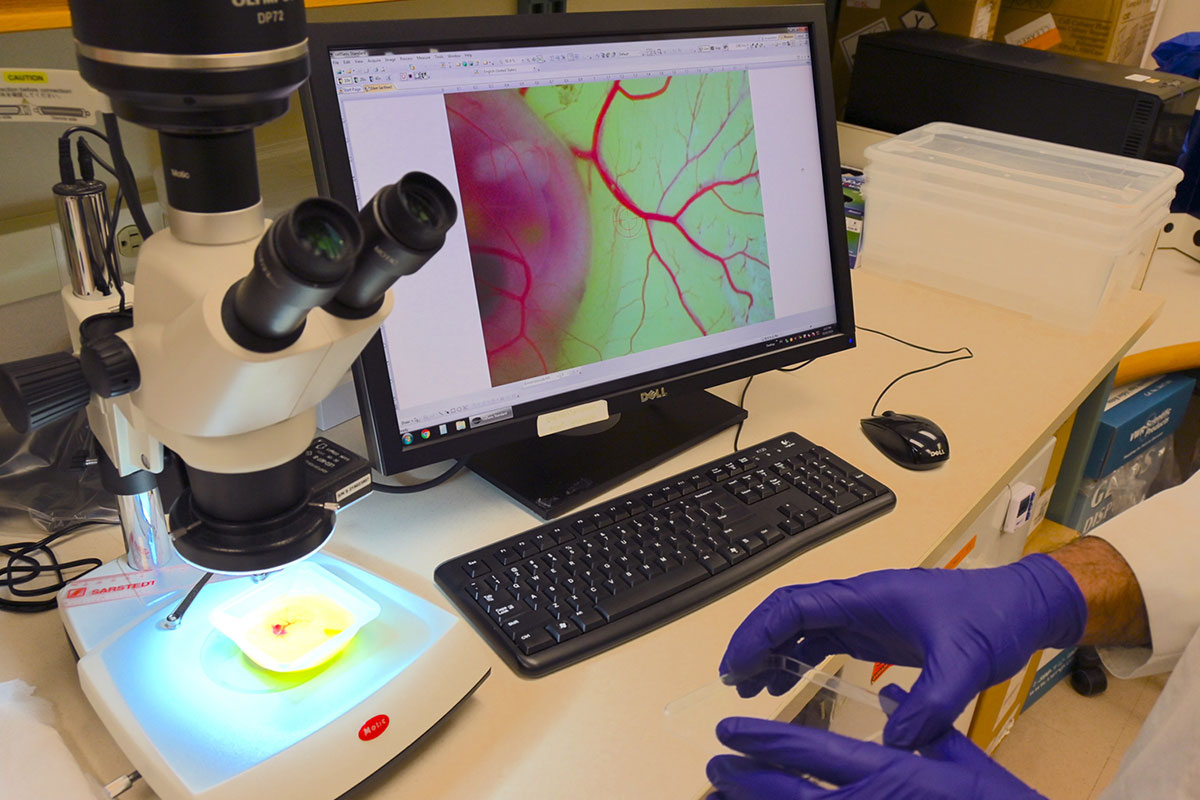
The research follows a set of ethical guidelines designed for work on chicken embryos. Lim and his team are careful to wrap up all of their research well before the three-week mark when an egg would traditionally hatch.
This research is unique because it can use a tiny, tiny sample size, it’s fast and affordable, and it could be built out to be offered to all children with treatment-resistant cancers in B.C., Lim said.
Cancer researchers can also implant small amounts of human cancer in mice, which can keep the cancerous cells alive, and even grow them, for several months before testing cancer treatments.
The chicken-egg model is much faster, delivering results in five to seven days compared with four to six months, and cheaper, because it just requires buying chicken eggs and keeping them in an incubator compared with building a lab to house mice, Baht said.
The chicken-egg model is helpful when it comes to pediatric cancers because you can work with an extremely tiny sample size. The model could also be used for adult cancers where the biopsy sample is several times larger.
The lab was set up in the spring of 2021 with the help of Karla Williams, an associate professor of pharmaceutical sciences at the University of British Columbia.
This research is part of the Better Responses Through Avatars and Evidence Initiative, with the chicken egg being the avatar.
Lim said he wants his lab to get to the point where they can provide a preclinical evaluation for every child with cancer within the context of a pan-Canadian initiative called Profyle, or Precision Oncology for Young People.
Lim added that his project is made possible by philanthropy, with funding from the BC Children’s Hospital Foundation and the Michael Cuccione Foundation helping the BRAVE Initiative get started.
So far, their research has worked with about 100 leukemias and 20 solid tumours, Lim said. ![]()
Read more: Health, Science + Tech


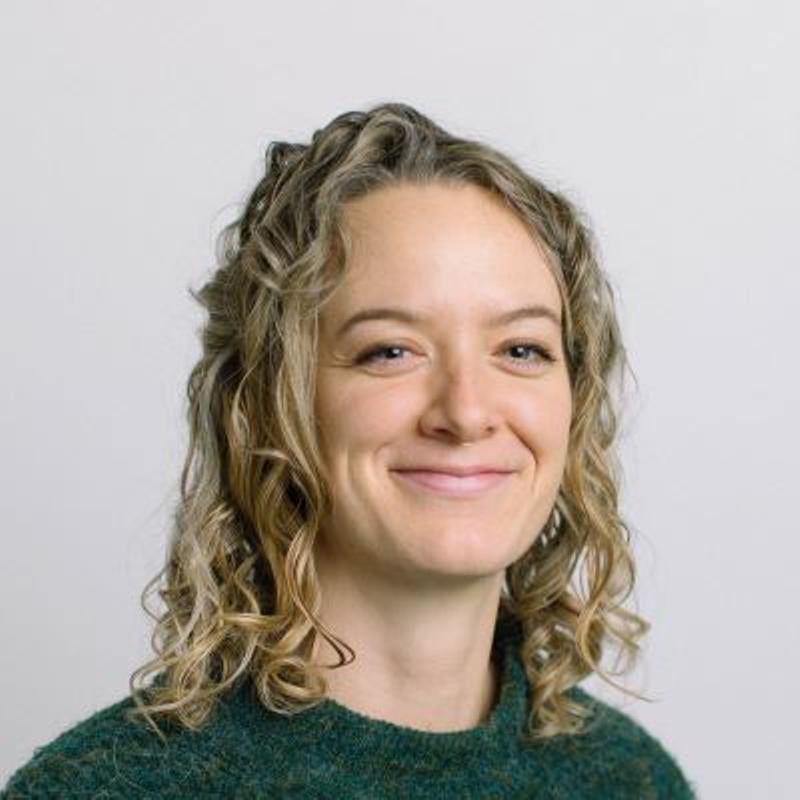

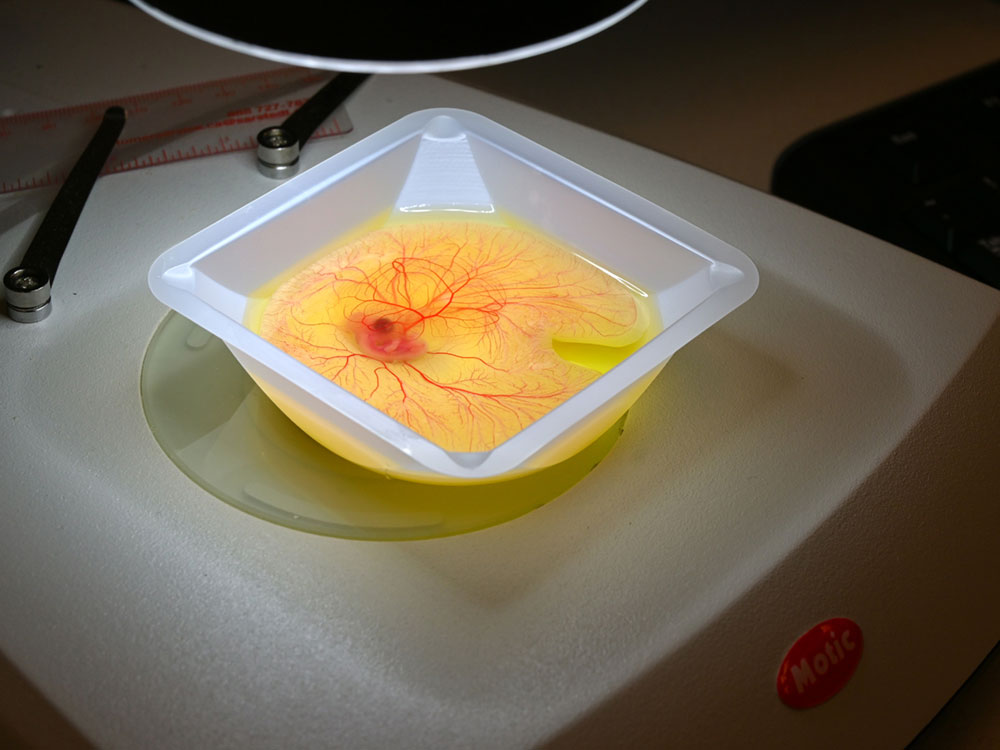



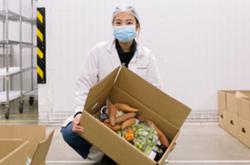








Tyee Commenting Guidelines
Comments that violate guidelines risk being deleted, and violations may result in a temporary or permanent user ban. Maintain the spirit of good conversation to stay in the discussion and be patient with moderators. Comments are reviewed regularly but not in real time.
Do:
Do not: